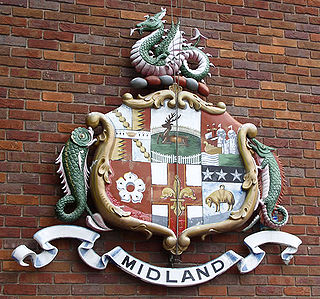
The Locomotives of the Midland Railway, followed its small engine policy. The policy was later adopted by the London, Midland and Scottish Railway, and contrasted with the London and North Western Railway's policy. The small engine policy was partly the consequence of a difference in the background of senior managers. In most railway companies, the elite position was the design, construction and maintenance of locomotives. Bigger engines brought more prestige and allowed longer trains. In the Midland, the marketing department was paramount. They recognised that people wanted more frequent, shorter trains rather than an infrequent service. It concentrated on very light, very fast and frequent trains.

The British Railways Class 24 diesel locomotives, also known as the Sulzer Type 2, were built from 1958 to 1961. One hundred and fifty-one were built at Derby, Crewe and Darlington, the first twenty of them as part of the British Railways 1955 Modernisation Plan. This class was used as the basis for the development of the Class 25 locomotives.

In 1919, the Midland Railway built a single 0-10-0 steam locomotive, No 2290. It was designed by James Anderson for banking duties on the Lickey Incline in Worcestershire, England. It became known as "Big Bertha" or "Big Emma" by railwaymen and railway enthusiasts.
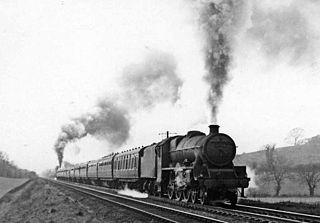
The Lickey Incline, south of Birmingham, is the steepest sustained main-line railway incline in Great Britain. The climb is a gradient of 1 in 37.7 for a continuous distance of two miles (3.2 km). Constructed originally for the Birmingham and Gloucester Railway (B&GR) and opened in 1840 it is located on the Cross Country Route between Barnt Green and Bromsgrove stations in Worcestershire.

The Derby Works comprised a number of British manufacturing facilities designing and building locomotives and rolling stock in Derby, England. The first of these was a group of three maintenance sheds opened around 1840 behind Derby station. This developed into a manufacturing facility called the Midland Railway Locomotive Works, known locally as "the loco" and in 1873 manufacturing was split into locomotive and rolling stock manufacture, with rolling stock work transferred to a new facility, Derby Carriage & Wagon Works.
The Birmingham and Gloucester Railway (B&GR) was the first name of the railway linking the cities in its name and of the company which pioneered and developed it; the line opened in stages in 1840, using a terminus at Camp Hill in Birmingham. It linked with the Bristol and Gloucester Railway in Gloucester, but at first that company's line was broad gauge, and Gloucester was a point of the necessary but inconvenient transhipment of goods and passengers onto 4 ft 8+1⁄2 in gauge that became the national standard. Nearly all of the original main line remains active as a "trunk" route, also known as an arterial route or line.

The London, Midland and Scottish Railway (LMS) Hughes Crab or Horwich Mogul is a class of mixed-traffic 2-6-0 steam locomotive built between 1926 and 1932. They are noted for their appearance with large steeply-angled cylinders to accommodate a restricted loading gauge.
Locomotives of the London and North Western Railway. The London and North Western Railway (LNWR) Locomotive Department was headquartered at Crewe from 1862. The Crewe Works had been built in 1840–43 by the Grand Junction Railway (GJR).

LMS No. 10000 and 10001 were the first mainline diesel locomotives built in Great Britain. They were built in association with English Electric by the London, Midland and Scottish Railway at its Derby Works, using an English Electric 1,600 hp diesel engine, generator and electrics.
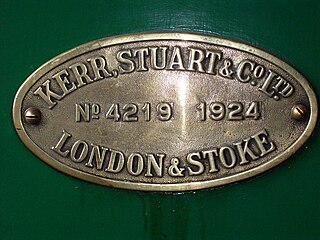
Kerr, Stuart and Company Ltd was a locomotive manufacturer in Stoke-on-Trent, England.

The London and North Eastern Railway Class U1 was a solitary 2-8-0+0-8-2 Garratt locomotive designed for banking coal trains over the Worsborough Bank, a steeply graded line in South Yorkshire and part of the Woodhead Route. It was both the longest and the most powerful steam locomotive ever to run in Britain. It was built in 1925 with the motion at each end being based on an existing 2-8-0 design. The original number was 2395, and it was renumbered 9999 in March 1946, and then 69999 after nationalisation in 1948, although it retained its cab-side plate bearing its original number throughout its life. The locomotive ran for some time as an oil burner, and was tried out on the Lickey Incline in 1949–1950 and again, after the electrification of its home line, in 1955. These trials were unsuccessful, and so the locomotive was withdrawn in 1955 and scrapped.

W. G. Bagnall was a locomotive manufacturer from Stafford, England which was founded in 1875 and operated until it was taken over in 1962 by English Electric.
R and W Hawthorn Ltd was a locomotive manufacturer in Newcastle upon Tyne, England, from 1817 until 1885.

Jones, Turner and Evans was a locomotive manufacturer in Newton-le-Willows, England from 1837, known as Jones and Potts between 1844 and 1852.

Neilson and Company was a locomotive manufacturer in Glasgow, Scotland.
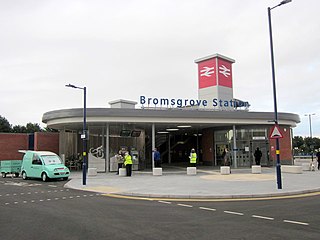
Bromsgrove railway station serves the town of Bromsgrove in Worcestershire, England. It is located at the foot of the two-mile Lickey Incline which ascends at a gradient of 1-in-37.7 towards Barnt Green on the line between Birmingham and Worcester. Bromsgrove is managed by West Midlands Railway. The current station opened on 12 July 2016, replacing an older station located slightly to the north.

James Edward McConnell (1815–1883) was one of the first locomotive engineers of the London and North Western Railway (LNWR). He was Locomotive Superintendent of the LNWR's Southern Division at Wolverton railway works from 1847 to 1862 and oversaw the design of the "Bloomer" and "Patent" locomotives. He was also one of the founding members of the Institution of Mechanical Engineers, and its first chairman, discussing the issue of an institute in 1846 at Bromsgrove.

The Surprise was a nineteenth-century British railway locomotive. It became notorious after its boiler exploded and killed several crew members during unsuccessful trials in the early days of the Lickey Incline.
The Midland Railway Johnson 0-6-0 were a class of locomotives serving Britain's Midland Railway system in the late 19th and early 20th centuries. Between 1875 and 1908 the Midland Railway, under the control of locomotive superintendents Samuel Waite Johnson and Richard Deeley, ordered 935 goods tender engines of 0-6-0 type, both from the railway's own shops at Derby and various external suppliers. Although there were many variations between different batches both as delivered and as successively rebuilt, all 935 can be regarded as a single series, one of the largest classes of engine on Britain's railways. The locomotives served as late as 1964, but none of them now survive.
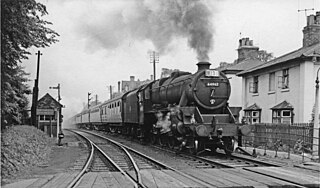
Blackwell railway station was a railway station serving Blackwell in the English county of Worcestershire.